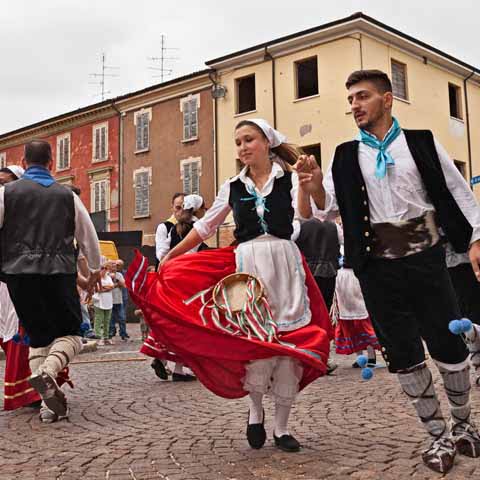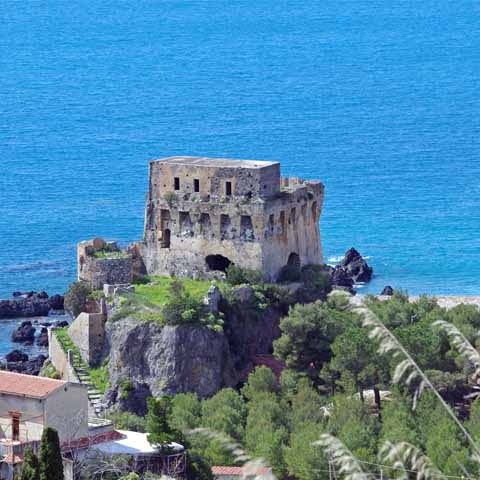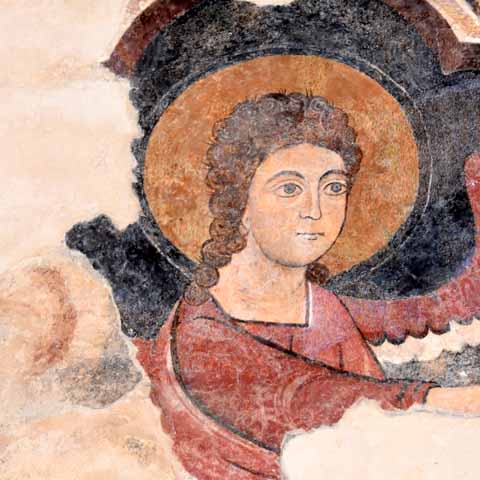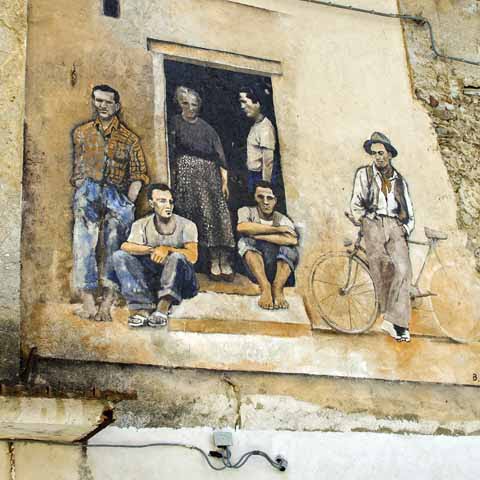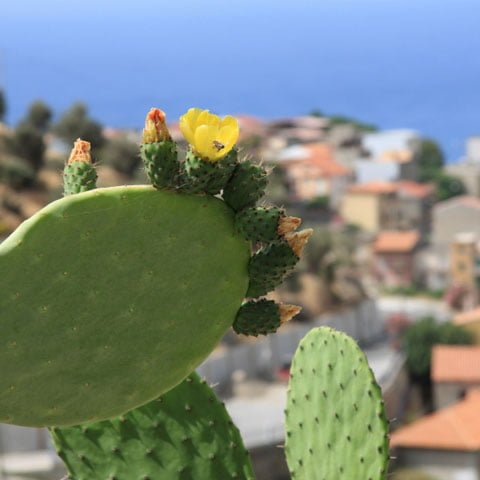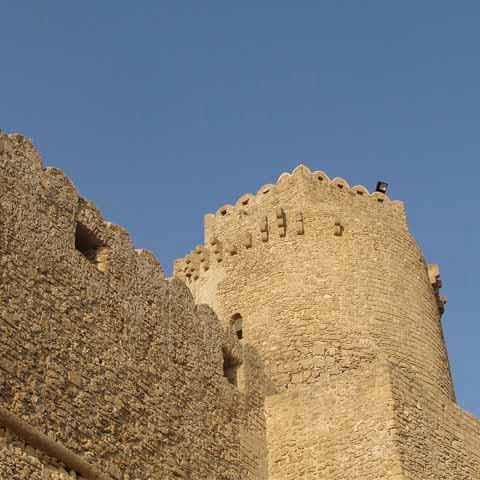Calabria Culture Travel Guide
If you traveled the length and width of Italy, you would be hard pressed to find another region with Calabria’s wide variety of wild and untouched natural beauty. Its craggy mountain ranges and miles of pristine white sandy beaches are the foundation of the ancient history and traditions of the region.
From the architecture of local castles and cathedrals to the opera theaters and magnificent underwater art discoveries, Calabria is a land of many hidden treasures that are best discovered with an open heart, wide eyes, and a longing for magnificence.
Calabria’s Architecture
The Aragonese Castle is viewed as a symbol for the city of Reggio Calabria. The structure has been home to a number of different inhabitants including the Normans, Angevins, and Aragonese over the centuries. Each civilization left its mark on the castle with various modifications, though it was Ferdinando I of Aragon who initiated the most drastic changes and greatly expanded the castle, thus his legacy persists as the castle’s namesake. The monument is one of the most visited in the city and in Calabria due to its medieval architecture and unusual seaside setting. After years of decay, the castle was eventually restored and reclaimed its place as a focal point in Reggio Calabria’s city center.
Near the Aragonese Castle is the Church of the Ottimati. The church is believed to have been built as early as the 10th century and was eventually rebuilt by a Norman Confraternity. The religious building’s exterior is simple yet classic, with a large primary arched doorway and a rose window in the front. Its most notable exterior characteristic is the bright red dome which sits atop a terracotta roof. The interior of the church is far more intricate, with gorgeous mosaic patterned floors made from colorful stones, tall marble columns, vaulted ceilings, and period art. The most famous painting within the Church of the Ottimati is Agostino Ciampelli’s the Annunciation of the Virgin Mary.
Perhaps one of the most unique pieces of local architecture is the Aragonese Castle of Le Castella. The castle sits just above the Marine Reserve of Capo Rizzuto so that it almost appears to be slowly sinking into the crystal blue water. The castle is only connected to the mainland by a thin strip of land. As rare a sight as the exterior is, the interior holds even more unparalleled wonders. A beautiful stone spiral staircase connects the three floors of the castle with every floor offering a different view. While the views of the Tyrrhenian Sea from the castle are spectacular, a room within offers visitors a rare observation of protected marine life of the seabed in real time via the castle’s underwater cameras.
Because of the number of mountain ranges, there are numerous gorgeous and quaint villages tucked into the heart of the peaks, as well as at the top of rocky structures overlooking the seas. The villages near and around the Aspromonte Mountains are a wonderful excursion where visitors can enjoy the natural beauty of the land between stops. Another must see is Scilla, which sits atop craggy rocks overlooking the sea thanks to its location along the Strait of Messina. Scilla’s coastal district, called Chianalea, is considered to be one of Italy’s most beautiful villages.
Literature in Calabria
Though not all Calabrian writers have attained national or international fame, this enchanting land has made a significant impact on literature over the centuries.
One example is Tommaso Campanella, a Dominican Friar from the 16th century noted for his philosophical writings, theological treatises, and poems.
Several centuries later, daily life in Calabria took centerstage in the works of Nicola Misasi, whose narrative style depicted the stories of local farmers, shepherds, and bandits, creating a mostly accurate, yet at times romanticized, snapshot of Calabria in the late 19th and early 20th centuries.
In a similar vein, Corrado Alvaro implemented the verismo style (Italian realism) to portray and call attention to the widespread poverty in his home region. Alvaro’s first and most significant work, Gente in Aspromonte, is a collection of 13 short stories chronicling the struggles of shepherds in the Aspromonte area during the first decades of the 20th century.
Several local writers focused on political commentary or satire to call attention to Calabria’s poverty and struggling social classes. For instance, Filippo De Nobili was a politically active poet born in Catanzaro who wrote mainly political satire in the 20th century. Two other significant political writers from the 20th century are Francesco Perri, who wrote poetry and novels, and Leonida Repaci, a prolific writer of novels, poetry, and non-fiction work who helped found the Viareggio Literary Prize.
In more recent years, several Calabrian authors have gained national and international acclaim. Among these is Carmine Abate, a writer of short stories, novels, and essays with themes on migration and cultural differences. His works have been translated into English as well as several other European languages and Arabic.
Also worth mentioning are the writers part of Calabria’s Arbëresh (Italo-Albanian) tradition.
Giulio Variboba, an Arbëresh poet born in the province of Cosenza, is best known for his work titled The Life of the Virgin Mary, which was written in Arbëresh in the mid-eighteenth century. Variboba’s work is credited with advancing Arbëresh culture in Calabria.
Girolamo de Rada, a prodigious Albanian writer born in Cosenza in the 19th century, is known for his highly regarded work, Canti di Milosao or Songs of Milsao, which is a long romantic ballad.
Outside of the region’s native writers, Calabria has also served as an inspiration for international works including a travel memoir by Alexandre Dumas outlining his interactions with the Calabrians as well as a book by English novelist George Gissing, who contrasts Calabria’s poor conditions and corruption with the remarkable spirit of the locals.
In a slightly different way, Giovanni Battista Palatino contributed to modern day literature. Born in Rossano in the 16th century, he is the namesake of Palatino, a 1949 serif typeface designed by Hermann Zapf.
Art in Calabria
This southern region located at the toe of the boot of Italy is largely surrounded by the waters of the Tyrrhenian and Ionian Seas. So it is more than fitting that some of the most well-known pieces of art in Calabria were discovered miles under foaming waves.
The National Museum of Reggio Calabria features vast archeological collections from ancient time periods of early Italian civilization, Magna Graecia, and the Byzantine Era. The museum has a particularly interesting underwater section that displays ancient relics found in the waters of Calabria including the iconic Riace Bronzes, which are two six-foot plus bronze statues that weigh more than 300 pounds each. The statues were recovered from the floor of the Ionian Sea and are thought to have originally been thrown from a sea vessel trying to lighten its load while traversing the sea.
Among Calabria’s native artists, Marco Cardisco (also known as Marco Calabrese) was one of the most active during the Renaissance Period. Known for his portraits of Roman nobles, Giuseppe Pascaletti was perhaps the most prominent artist in the province of Cosenza during the 18th century. Calabria is also home to artist Enrico Salfi. Born in Cosenza, Salfi was a renowned painter who focused on biblical and Ancient Roman subjects.
A modern key figure of Calabria’s artistic scene is Umberto Boccioni, a pioneer of Italy’s Futurism Movement which prevailed during the first decades of the 20th century. Despite a relatively short career, Boccioni’s works have been displayed in many of Italy’s major art museums as well as the Metropolitan Museum of Art in New York.
Music
Calabria is home to the Roccella Ionica International Jazz Festival that was founded in 1981 and occurs every year in August. The festival encourages musicians of every art form and genre of music to experiment and collaborate. It is not unusual to have composers and singers from the genres of jazz, classical music, and pop interacting during the festival.
The region has a long-standing history of great operatic talents such as Nicola Manfroce, Francesco Cilea and Giorgio Miceli. Centuries later many opera theaters still stand and are an integral part of the music community. Catanzaro’s Teatro Politeama is a modern theater built on the site of older, preceding theaters. Both Teatro Rendano in Cosenza and Teatro Comunale Cilea of Reggio Calabria are theaters with a rich history. Teatro Rendano was destroyed during World War II and subsequently rebuilt, while Teatro Comunale Cilea was expanded during the postwar period.
Regional or folk songs of Calabria are often performed with musical instruments such as accordions, tambourines, or organetti. That said, the region is widely known for the music of the zampogna. This instrument is comprised of Italian double chantered pipes that largely resemble bagpipes, and in Calabria alone there are at least five different types of zampogne.
In terms of modern music, Calabria is home to several nationally acclaimed singer songwriters including the sisters Mia Martini and Loredana Bertè as well as Rino Gaetano, and Brunori Sas.
Travel Guides

